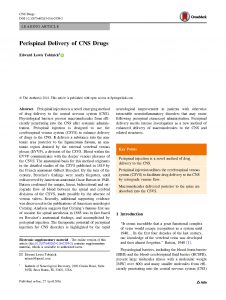Traumatic Brain Injury 8 years prior, gait improvement after treatment at the INR in Boca Raton in March 2017.
Disclaimer: Individual results vary, not all patients respond. Additional doses may be necessary to maintain the clinical response. Treatment for these indications is innovative (“off-label”). Please see the Terms of Use. The method of off-label treatment utilized is a patented invention of the INR. Copyright 2017 INR PLLC, all rights reserved.
Scientific literature provides support for the scientific rationale. See:
- Edward Tobinick, Rodriguez-Romanacce H, Kinssies R, Kim N. PSE FOR TRAUMATIC BRAIN INJURY. Chapter 7 In: Heidenreich KA, editor. New Therapeutics for Traumatic Brain Injury. Cambridge, Mass.: Academic Press; 2017. p. 109-29. LINK. (first published October 2016).
- Bergold Peter J. Treatment of traumatic brain injury with anti-inflammatory drugs. Experimental Neurology 275 (Pt 3) (2016) 367-380. FULL-TEXT.


 May 2, 2016 (Los Angeles, Boca Raton): On April 27, 2016, the peer-reviewed review article entitled, Perispinal Delivery of CNS Drugs, by Edward Tobinick MD, published online in the scientific journal CNS Drugs. The article published in print in the June issue of the journal. The abstract of the article states:
May 2, 2016 (Los Angeles, Boca Raton): On April 27, 2016, the peer-reviewed review article entitled, Perispinal Delivery of CNS Drugs, by Edward Tobinick MD, published online in the scientific journal CNS Drugs. The article published in print in the June issue of the journal. The abstract of the article states: